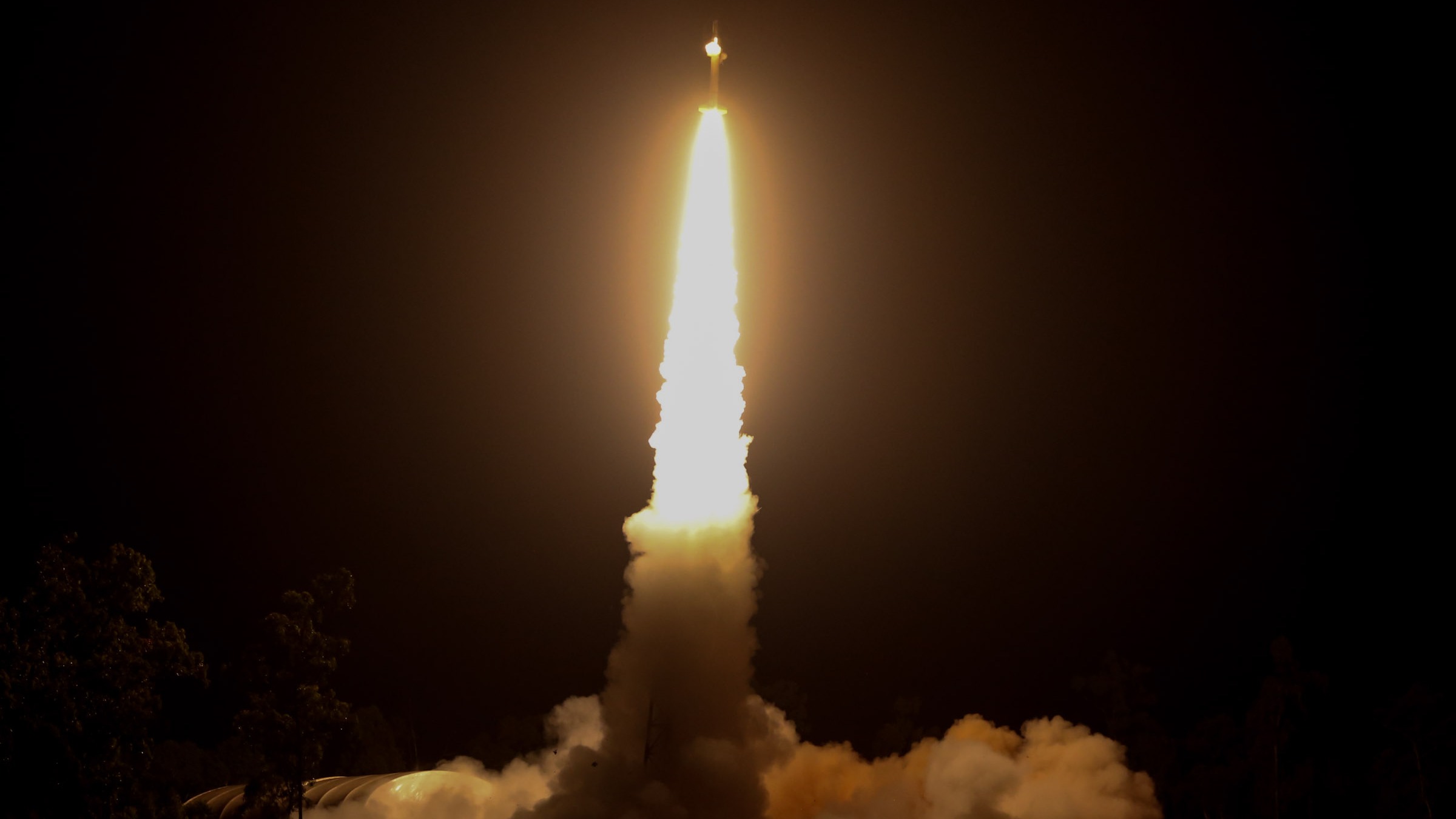NASA launches sounding rocket from Australia
It was NASA's first launch from a commercial facility outside the United States, and more are coming very soon.
NASA successfully lofted the first of a trio of sounding rocket missions to study Alpha Centauri from Australia, in a historic agency first.
The agency's launch of a Black Brant IX sounding rocket Sunday (June 26) from Arnhem Space Center, in Australia's Northern Territory, is the first commercial launch by NASA outside of the United States.
The rocket sent aloft the University of Wisconsin-Madison's X-ray Quantum Calorimeter, or XQC, to examine X-rays in the zone of gas and dust between stars known as the interstellar medium.
Related: NASA rocket launch sparks stunning green and violet clouds in night sky (photos)
While an official launch time has not yet been released by NASA, video of the blastoff was posted by the NASA Expeditions Account at 12:46 p.m. EDT (1646 GMT or 2:46 a.m. Monday, June 26 at the launch site.) CNN reported the launch took place just after midnight local time, citing Equatorial Launch Australia (ELA), which is the developer, owner and operator of Arnhem.
The launch campaign for the three missions required a "significant logistical undertaking," including sending each rocket to the launch site via barge and bringing more than 70 NASA personnel to the southern hemisphere, Melissa de Zwart, a professor of digital technology, security and governance at Australia's Flinders University, wrote on The Conversation.
Liftoff! 🚀 A Black Brant IX sounding rocket launched from @ela_space's Arnhem Space Center in Northern Territory, Australia, carrying the X-ray Quantum Calorimeter experiment. The next launch from Australia is scheduled for July 4. pic.twitter.com/yEuZx83n71June 26, 2022
All three missions, including Sunday's launch, will "conduct astrophysics studies that can only be done from the southern hemisphere," NASA said in the media kit for the missions.
Breaking space news, the latest updates on rocket launches, skywatching events and more!
The two forthcoming missions will study Alpha Centauri, the closest star system to our own. The next of the trio will fly no earlier than July 4, launching the University of Colorado Boulder's Suborbital Imaging Spectrograph for Transition region Irradiance from Nearby Exoplanet host stars, or SISTINE.
"SISTINE will study how ultraviolet light from stars affects the atmospheres of the planets around them, including the gases thought to be signs of life," NASA said in a June 7 release about the suborbital launches.
The third mission, scheduled for July 12, is another UC Boulder mission called Dual-channel Extreme Ultraviolet Continuum Experiment, or DEUCE. The mission aims to conduct observations using a span of the ultraviolet light spectrum rarely accessed for astronomy.
"These measurements are needed to model stars similar to and smaller than our sun, as well as understand their effects on planetary atmospheres," NASA said.
Follow Elizabeth Howell on Twitter @howellspace. Follow us on Twitter @Spacedotcom and on Facebook.

Elizabeth Howell (she/her), Ph.D., was a staff writer in the spaceflight channel between 2022 and 2024 specializing in Canadian space news. She was contributing writer for Space.com for 10 years from 2012 to 2024. Elizabeth's reporting includes multiple exclusives with the White House, leading world coverage about a lost-and-found space tomato on the International Space Station, witnessing five human spaceflight launches on two continents, flying parabolic, working inside a spacesuit, and participating in a simulated Mars mission. Her latest book, "Why Am I Taller?" (ECW Press, 2022) is co-written with astronaut Dave Williams.

